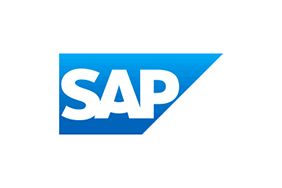How Technology Can Bridge the Gap Between COP29 Ambitions and Real-World Outcomes
Published 12-17-24
Submitted by SAP
The 29th UN Climate Conference (COP29) in Baku, Azerbaijan, aimed to advance a new climate finance goal and inspire stronger national climate commitments. While progress was made, the private sector must now play a pivotal role in turning these ambitions into actionable outcomes. Central to this effort is the energy transition, one of the key economic growth drivers of our time.
The energy transition is creating a profound shift across industries and global economies. Amplified by technological innovation and intense competition, it is reshaping sectors and shifting economies toward renewable energy. This change is not only an environmental necessity but also a catalyst for economic growth, challenging the traditional dominance of fossil fuels. With capital investments increasingly directed toward renewable energy infrastructure, investors are aligning their priorities with sustainability, signaling that profitability and environmental stewardship can coexist. Yet, the ongoing prominence of oil and gas underlines the complexity and scale of this transition.
In parallel, the circular economy is gaining momentum as businesses address the dual challenges of material scarcity and carbon reduction. At COP29, there was significant discussion about how a circular approach focused on rethinking supply chains, redesigning products, and optimizing resources could reduce dependency on finite materials while driving sustainable economic growth. By adopting circular economy principles, businesses can minimize waste and keep valuable materials in circulation, contributing to a more resilient and sustainable future.
The Role of Business in Transforming Climate Commitments into Tangible Outcomes
One of the central discussions at COP29 was the need for harmonizing global standards for carbon reduction and accounting. Foreign policy players, along with the private sector, stressed the importance of mobilizing finance for sustainable capitalism. In particular, there was a call for clearer and standardized reporting frameworks to simplify the process and ensure transparency. One critical area was the importance of accurate data collection for carbon markets and product-level carbon accounting, which can help businesses engage consumers and reduce emissions.
There are three ways technology plays a pivotal role in addressing some of these challenges:
- Sustainability data is available in every organization’s ERP system, so it’s time to start automating data collection and reporting processes to ease some of the regulatory burden.
- Companies should leverage IT spending to support sustainability initiatives, specifically by applying generative AI to optimize climate solutions and create circular products.
- Companies must shift focus on the carbon footprint of specific products to pinpoint areas with the most significant impact.

From Policy to Practice: How Technology and Global Standards Can Accelerate Climate Action
Empowered by technology and guided by clear policies, businesses have a unique opportunity to bridge the gap between high-level climate commitments and actionable, on-the-ground strategies.
Central to this is aligning sustainability and financial priorities. Effective climate action demands collaboration between chief sustainability officers and chief financial officers, as climate change has evolved from an ethical and environmental issue to a pressing financial imperative.
To accelerate progress, we need globally harmonized policies, rigorous carbon accounting frameworks, and advanced technology solutions. By embedding AI-driven innovation, robust reporting standards, and actionable insights into business operations, we can ensure that COP events, such as COP29 in Baku, are remembered as turning points – not just discussions. While the challenges ahead are formidable, the opportunities for transformative action are even greater – and SAP is here to lead the way on a low-carbon, circular future.
Sophia Mendelsohn is chief sustainability and commercial officer at SAP.

SAP
SAP
SAP’s strategy is to help every business run as an intelligent, sustainable enterprise. As a market leader in enterprise application software, we help companies of all sizes and in all industries run at their best: SAP customers generate 87% of total global commerce. Our machine learning, Internet of Things (IoT), and advanced analytics technologies help turn customers’ businesses into intelligent enterprises. SAP helps give people and organizations deep business insight and fosters collaboration that helps them stay ahead of their competition. We simplify technology for companies so they can consume our software the way they want – without disruption. Our end-to-end suite of applications and services enables business and public customers across 25 industries globally to operate profitably, adapt continuously, and make a difference. With a global network of customers, partners, employees, and thought leaders, SAP helps the world run better and improve people’s lives.
More from SAP

